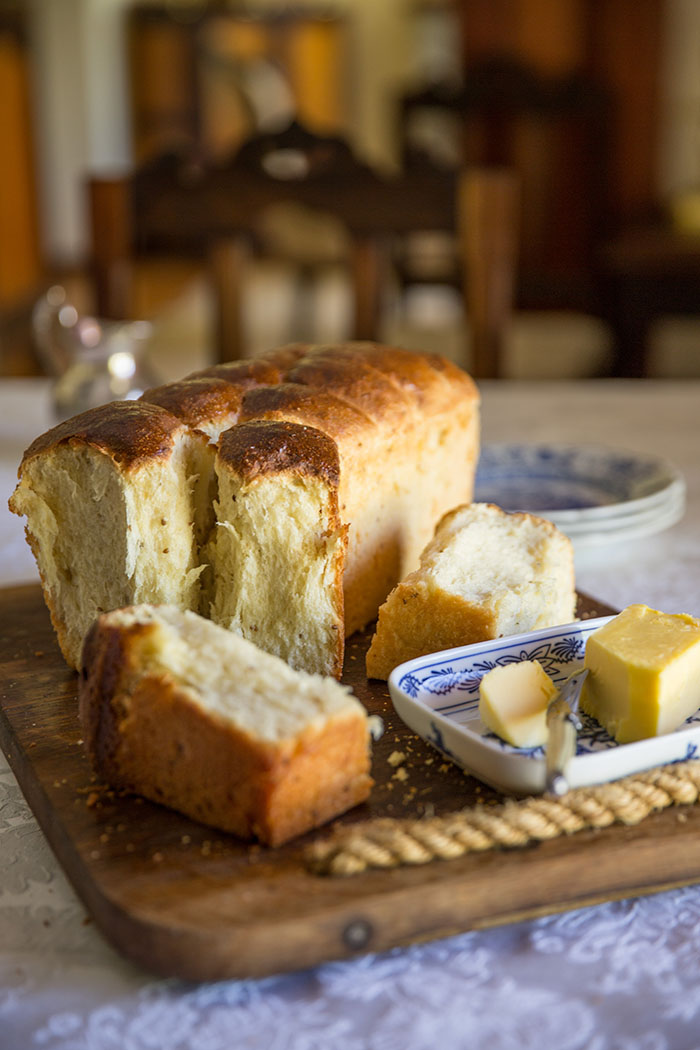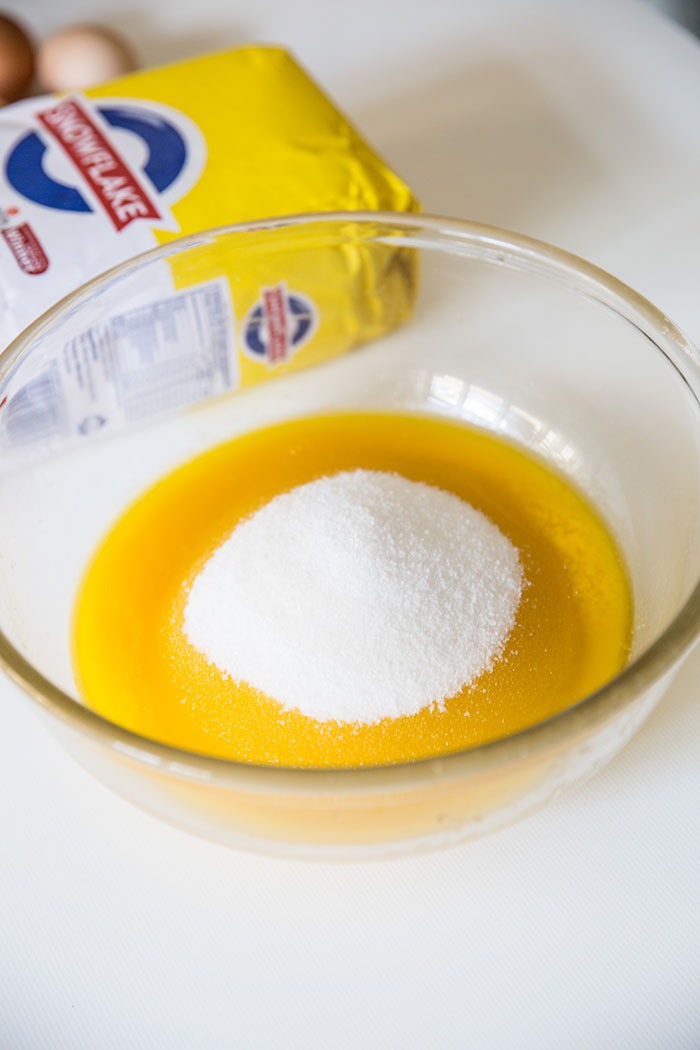How to make mosbolletjie bread

Last week I visited to De Wetshof Wine Estate in Robertson to uncover the mysteries of the mosbolletjie and to learn how to make it from the best. Mosbolletjie bread is a traditional South African heritage recipe made from enriched bread dough and is very similar to brioche.

To make it the proper way, it needs to be made with fermenting grape juice, or must (soetmos in Afrikaans), and thus it can only be made during the grape harvest. There are recipes out that use a ferment made from raisins – which will work and is useful if you can’t get anywhere near a wine farm in late summer, but I wanted to learn how to bake it the proper way.
Francina Blaauw is the family cook at De Wetshof she makes three loaves of Mosbolletjie bread every day during the harvest. The loaves get sent up to the cellar to rejuvenate workers who have been up since the early hours of the morning harvesting grapes at the coolest time of day. This bread, which is peppered with aniseed and has the softest stringy texture, is best served straight out of the oven while warm. Any leftover bread will be dried into delicious rusks.

The making of the bread is a 24 hour process that starts in the middle of the afternoon the day before. The carefully selected soetmos (fermenting grape juice) is sent down to the kitchen from the cellar for Francina to use. This is not just any juice drawn from the tank. It has to be just right. 17 degrees Balling * (when the juice is mid-ferment), works best, and if necessary they do a quick blend between two tanks to get the perfect levels required for the bread. If they take the making of their mosbolletjie bread this seriously, you can only conclude how they make their wine.
*balling in winemaking is the measurement of the sugar levels in a liquid.
This is Peter De Wet, winemaker of De Wetshof doing a tank tasting of the fermenting grape juice, which is very delicious by the way.

The flour and aniseed are mixed in a bowl. The eggs are beaten in a separate bowl, and the melted butter and sugar are then combined in a third bowl. Then the mixing begins.


First the flour and aniseed with the beaten eggs. Then the milk, sugar and butter mixture, and finally the fermenting grape juice. Much kneading ensues to release the gluten and turn this all into a springy dough which gets thoroughly greased before being placed in a large bowl. This gets covered in plastic and wrapped in a thick blanket and left to rise overnight.


The bread reaches new levels of perfection during an electric storm, which according to Peter probably has more to do with the levels of moisture in the air at that time vs any mystical reason. Either way, I can’t imagine the loaves getting any better than the ones I tasted at De Wetshof.


After a night wrapped up in a warm spot, the dough – which quadruples in size, gets knocked back and rolled into balls. This is only ever done by hand. It is never cut and is more of a squeezing-out process. The balls are placed snuggly next to each other in greased loaf tins, which then spend the rest of the morning rising happily in the warm kitchen before being baked at around 1 pm.


It’s delicious served with butter, jam or grated cheese. Or all of those.

I’m a huge fan of De Wetshof wines and in particular their Chardonnay, so it was such a privilege for me to get to visit and stay on the farm. Danie De Wet introduced this Burgundian grape into the country many years ago, and it was my first wine love.
Both he and De Wetshof wines have come a long way since those days, and now his two sons Johann – who takes care of viticulture and marketing, and Peter – who makes the wine, are integral in the operation of this incredible wine estate.







You might also like:
Mossbolletjie French toast with cottage cheese and berries
Possibly the best banana bread ever
Irish soda bread with rosemary and onions
Easy cheese & onion bread with herbs
Recipe – from De Wetshof
Mosbolletjie bread
Print Recipe
Ingredients
- 2.5 kg flour
- 6 eggs
- 250 g butter
- 2 cups milk
- 4 cups must strong fermenting must, at about 17° Balling
- 4 cups sugar
- 35 gram dried aniseed
- sweet sugar water three tablespoons on half cup water pinch of salt
Instructions
- Mix flour and aniseed in a mixing bowl
- Blend sugar, melted butter and milk
- Beat eggs separately
- Now mix the flour and aniseed with the beaten eggs and then add the milk, sugar, and butter mixture
- Add the must and knead well
- Cover the mixing bowl well with a blanket or thick towel and leave to rise overnight
- The next morning, knead down, form small balls and place them against each other in loaf pan
- Allow to rise again and place in oven at 180ºC until golden brown and cooked, more or less one hour
- Remove from pan and dab the top with a paint brush dipped in sugar water
Notes
- It is very important to obtain must at the correct Balling, or the buns will be either too sweet or not sweet enough.
BUY MY NEW eBOOK
Find me on Instagram & Pinterest

OMW ! my mouth is watering !!!
My father is a winemaker so this bread is particularly interesting to me. It look scrumptious!
That bread and the vineyard looks just perfect. I’ve never thought of using must or wine in breadmaking.
This is fantastic.
Wow, that bread is just gorgeous! And so are your photos 🙂
Your post is wonderful and the bread…i can almost smell it ……and your photos are amazing. The grapes/vineyard are gorgeous….I would never want to leave such a beautiful place.
Thanks Monica, I never wanted to leave either. Part of me doesn fantasize about living in a rualr area. Sigh.
Can’t wait to try this, mosbolletjies bring back so many childhood memories. Where can I buy must? I’ve never come a cross it before?
Hi Gwyn, I write about the must in my blog post.Its only available during the grape harvest
Hi Sam,
Thanks for these recipes. Being from Johannesburg it is difficult to get some of the fermenting grape juice for the Mosbolletjie recipe. I say this with a whisper, but what is a recommended replacement ingredient if one cannot get the fermented grape juice.
Any ideas would be appreciated.
thanks
Ian
Thanks for the recipe I loved it and look delicious
I’m so glad you loved it Anna 🙂
I would love to try this recipe but where does one get the grape must from. Is it sold in shops or can it be ordered from the farm?
Hi Vivienne, its a recipe very specific for someone who has access to it from a wine farmer during harvest. There are numerous yeast-based recipes out there that are easier. take a look at this one:
http://www.janhendrikblog.com/seasonal/2017/10/5/mosbolletjies